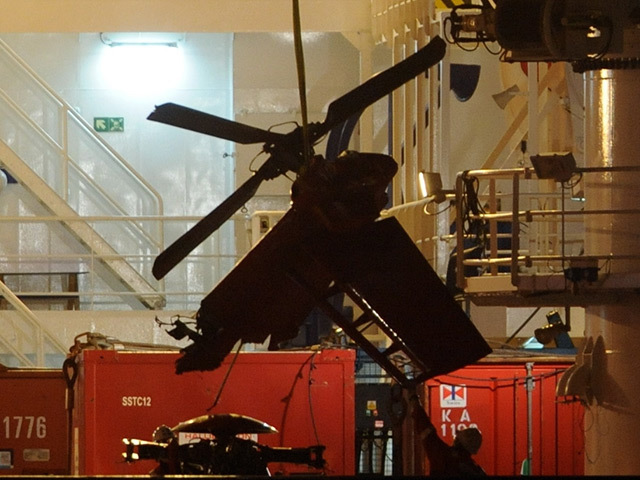
A sophisticated monitoring system recorded hundreds of warnings about loose metal in the gearbox during the days leading up to the 2009 North Sea helicopter disaster.
There were four detected by the Hums equipment just 15 minutes before the Super Puma AS332 L2 plunged into the sea like a “torpedo”.
Yesterday, Hums expert Brice Fernando told the 12th day of a fatal accident inquiry (FAI) in Aberdeen there were no metal particles detected on the aircraft between April 1, 2008, and March 23, 2009.
But on March 24, 2009, there were 667 “occurrences” and the next day there were 170, he said, adding this could be one or more particles being detected many times over.
During a close monitoring period of extra aircraft inspections after March 25, when an engineer found a tiny metal fragment in the gearbox, the Hums system recorded no further warnings.
A week later, on April 1, the equipment registered four metal chip detection alerts in the space of one minute and 43 seconds.
The figures only emerged after the helicopter crashed that day, killing all 16 people on board.
Mr Fernando, 30, works for the French company Airbus Helicopters, previously Eurocopter, which built the aircraft.
He took the call when engineers working for Bond, the aircraft’s operator, phoned Eurocopter on March 25 for advice about rising vibration trends in the Hums data and the discovery of the metal fragment.
And it was his name at the top of an e-mail sent to Bond’s team and Eurocopter colleagues saying the helicopter was fit to fly again the next day – if no further “abnormalities” were found.
Mr Fernando said the verdict was based on the latest Hums data, as well as Bond saying that the metal fragment was at the bottom of the main gearbox.
He added: “My understanding was that they (Bond) had found a particle, and had all the information for whether they should ground the aircraft or not.”
The gearbox was deemed serviceable by the operator and its planned replacement cancelled.
Mr Fernando said the aircraft’s Hums system was working as it should when it recorded the 841 warnings between March 24 and April 1.
But the FAI has been told the equipment was prone to lock-ups, including one on March 24, 2009, when metal detection warnings failed to show up on computers.
The inquiry has also heard there was a blunder on March 25, when Bond’s engineers misidentified the metal fragment that was found.
In addition, there was confusion between Bond and Eurocopter about which part of the gearbox was affected.
The inquiry, at the Town House in Aberdeen, continues.
Get updates from today’s session on EnergyVoice.com, and read full news and reaction from yesterday’s hearing in today’s Press and Journal